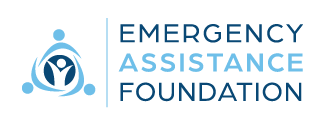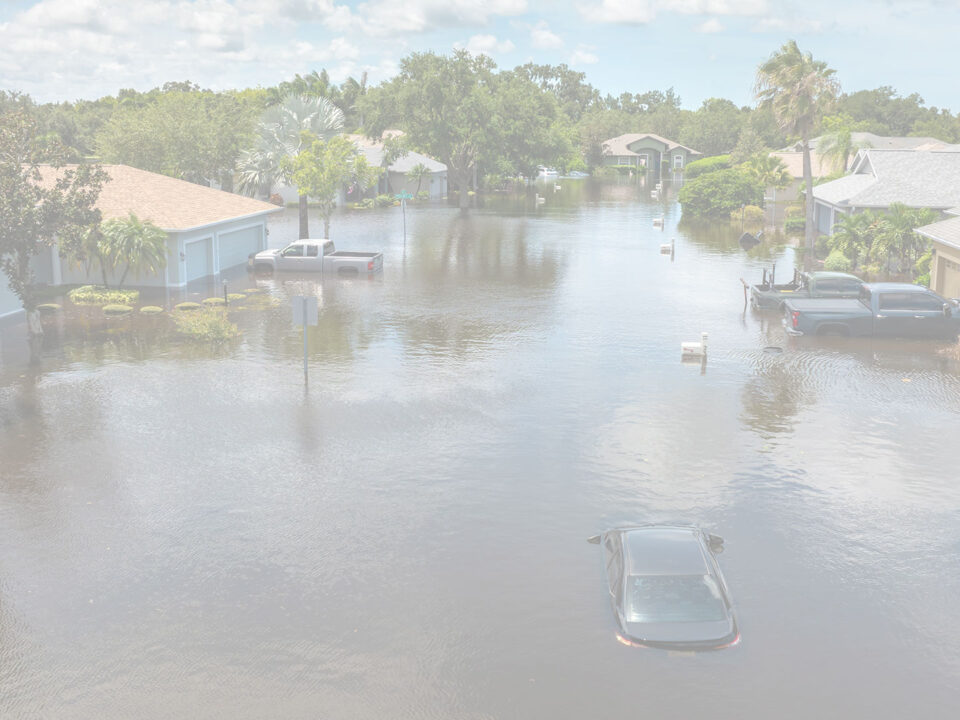
Supporting Financial Wellness in Today’s Workplace
August 19, 2025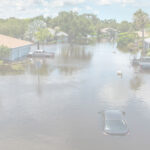
Flood Safety and Relief
September 23, 2025September 1, 2025
Every September, National Preparedness Month offers a crucial opportunity to reflect on the importance of being ready for disasters and emergencies. As natural disasters grow more frequent and severe, the need for preparedness has never been more urgent. Already in 2025, a wave of devastating events has highlighted the consequences of being unprepared and the value of proactive planning.
In this article, we explore why preparedness is crucial and provide practical steps you can take to equip your team to respond effectively.
The Growing Threat of Natural Disasters
In 2024, the United States came dangerously close to surpassing the record-breaking disaster losses of 2023. According to Environment America Research & Policy Center, the nation experienced 27 separate weather and climate disasters, each causing at least $1 billion in damages. These events collectively resulted in approximately $182.7 billion in losses and claimed at least 568 lives, making it the eighth-deadliest year for billion-dollar disasters since 1980.
Globally, the picture is equally concerning. ReliefWeb reports that there were 393 natural hazard-related disasters. These events caused 16,753 fatalities and affected 167.2 million people. Economic losses totaled US$241.95 billion.
The rising frequency of heatwaves, devastating wildfires, and other natural disasters underscores the urgent need for comprehensive preparedness strategies. As climate change accelerates these patterns, experts warn that the coming years are likely to bring even more frequent and intense extreme weather events.
The Increasing Frequency and Intensity of Disasters in 2025
In 2025, the world continues to experience an alarming increase in both the frequency and severity of natural disasters. The rising impact of climate change is evident, as the US alone has been struck by a record number of billion-dollar disasters this year. As of April 23, 2025, the Federal Emergency Management Agency (FEMA) has issued five major disaster declarations, covering various disasters throughout the nation. According to FEMA’s April 22 Disaster Relief Fund Report, response and recovery costs have already exceeded $4 billion this fiscal year, highlighting the significant financial burden even in a “quiet” first quarter.
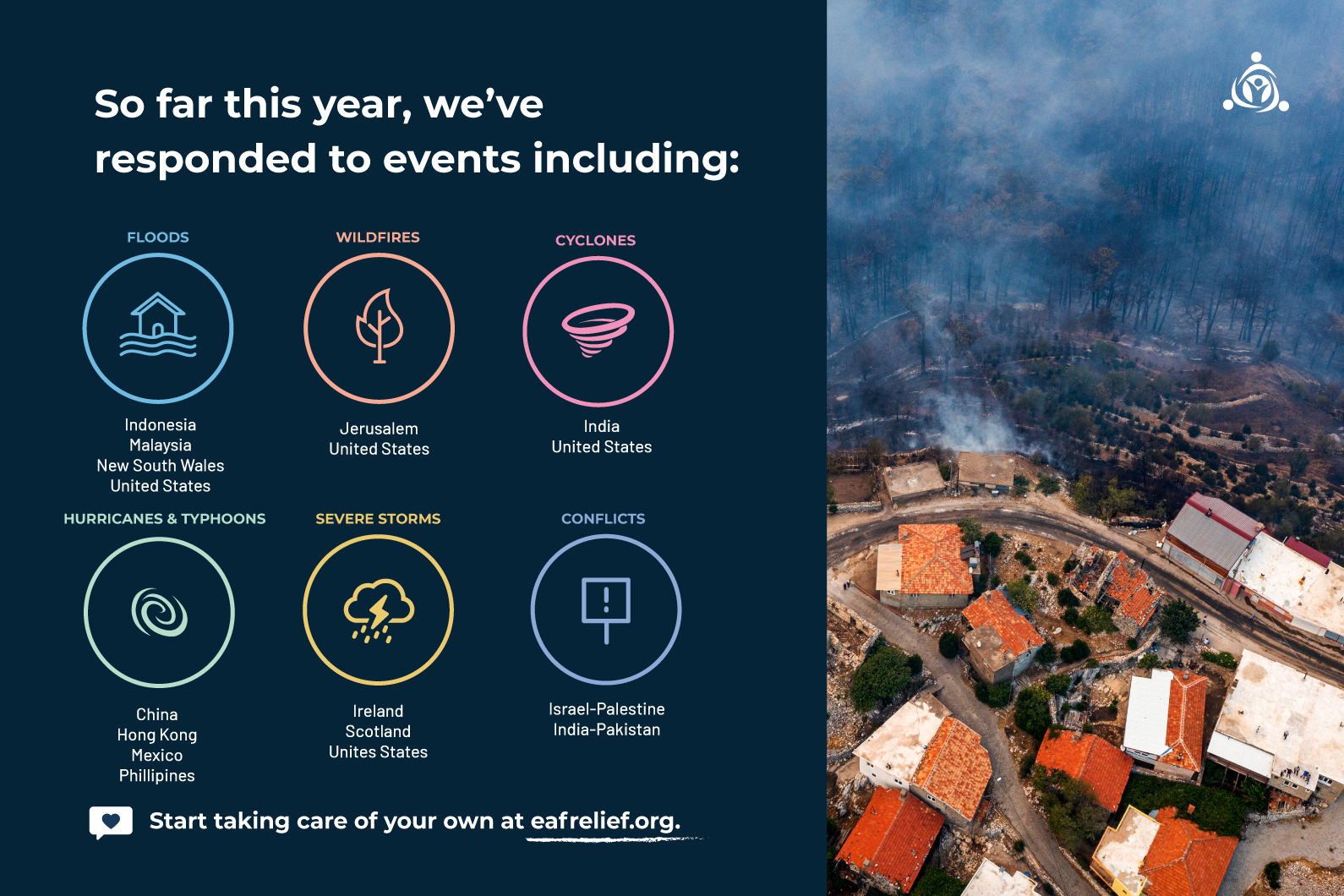
Notable Disasters in 2025
The following are some of the significant disasters that have occurred in 2025, highlighting the urgent need for preparedness:
- Southern California Wildfires (January 2025): Wildfires that swept through Southern California in January resulted in approximately 30 confirmed deaths. The financial impact was substantial, with estimated insured losses reaching around US$40 billion.
- 7–7.9 magnitude Myanmar–Thailand Earthquake (March 28, 2025): A catastrophic strike-slip earthquake struck near Mandalay, Myanmar, causing widespread devastation. The disaster claimed the lives of more than 5,300 people in Myanmar and 103 in neighboring Thailand, while over 11,400 individuals were injured. The quake caused an estimated US$11 billion in damage, destroying thousands of homes and numerous historic buildings across the region.
- Tornado Outbreaks in the US (March & May 2025): Tornado outbreaks between March 13–16 and again in mid-May caused widespread devastation across the United States, resulting in dozens of fatalities and hundreds of tornadoes. The March outbreak alone resulted in approximately 43 deaths and an estimated $6.25 billion in damages. By May 22, over 724 tornadoes had been recorded for the year, with total tornado-related deaths exceeding 35, highlighting the severe and ongoing threat posed by extreme weather events.
- European Heatwave & Wildfires (May–June 2025): Record-breaking heatwaves swept across Spain, France, and Italy, with temperatures reaching as high as 46 °C. The extreme heat fueled wildfires that triggered evacuations in Turkey’s Izmir region, while similar blazes also broke out in parts of France.
The financial toll of these disasters has been staggering. According to Aon’s Q1 Global Catastrophe Recap, insured losses from natural disasters totaled at least $53 billion globally in the first quarter of 2025, with US events responsible for approximately $50 billion — about 95% of the total. The effects are not only immediate but also long-lasting, as communities face ongoing challenges in rebuilding and recovery, underscoring the critical need for robust preparedness and response plans.
Disaster Prep Tips for Individuals
Being prepared involves a series of steps that individuals, families, and organizations can follow:
- Make a Plan: Discuss with family and friends how you'll communicate during and after a disaster. Organizations should also have plans to support team members during emergencies. Update your plans based on the latest recommendations, especially in light of ongoing global events like the COVID-19 pandemic.
- Build a Kit: Assemble supplies to sustain everyone in your household for several days post-disaster. Consider the unique needs of each individual and pet.
- Low-Cost, No-Cost Preparedness: Understand the risks in your area and take measures to strengthen your home against common hazards. Regularly review your insurance coverage.
- Teach Youth About Preparedness: Engage with children about emergency preparedness, ensuring they know what to do if separated from family.
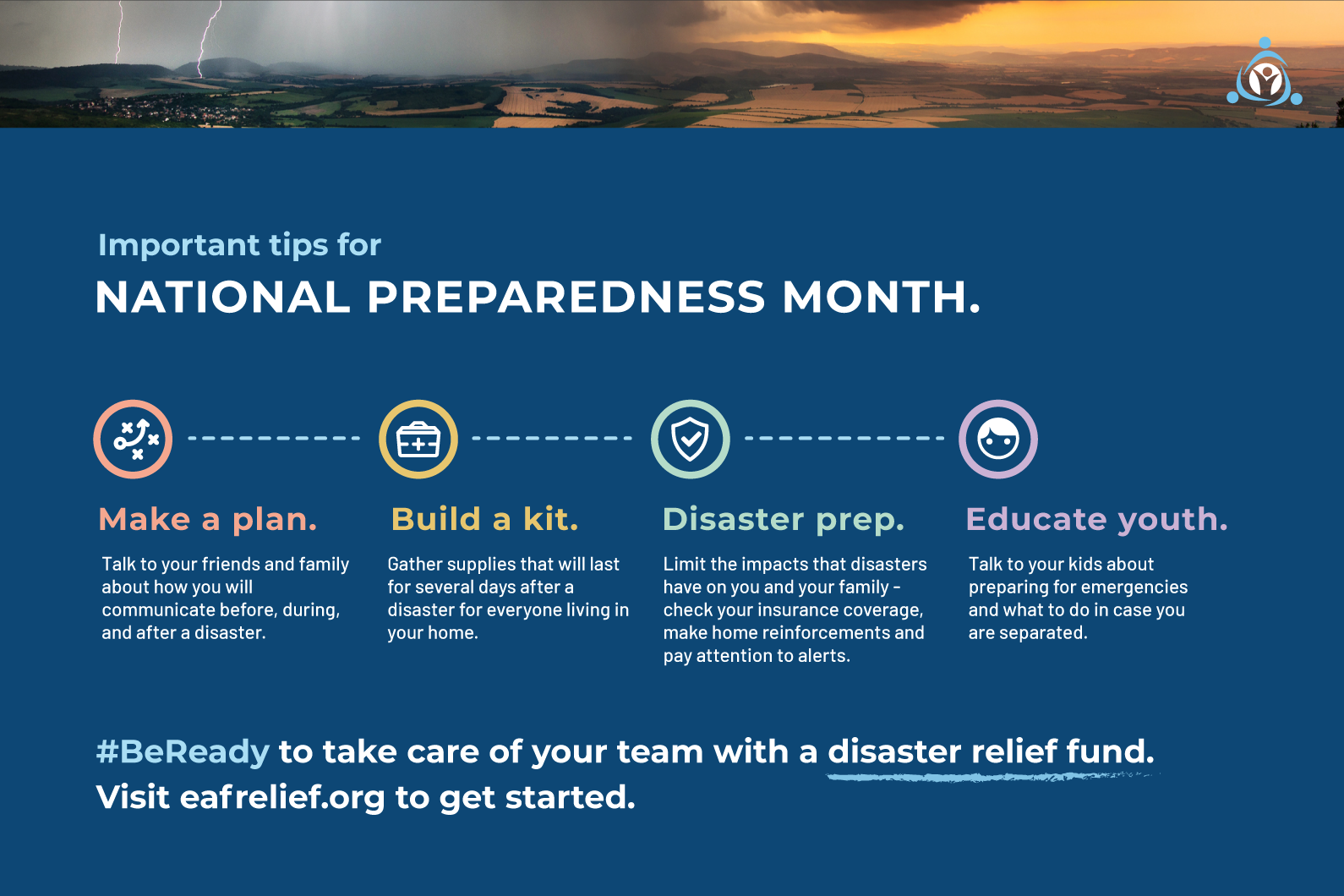
Disaster Prep Tips for Organizations
Organizations play a pivotal role in disaster preparedness, ensuring the safety of their employees and the continuity of operations:
- Know Your Risks: Conduct a risk assessment to identify potential emergencies and prioritize them based on impact and likelihood.
- Build a Response Team: Engage experts from various departments to create a comprehensive disaster response plan.
- Establish an Evacuation Plan: Designate primary and secondary evacuation routes. Ensure routes are well-lit, marked, and accessible.
- Establish a Relief Fund: In the aftermath of a disaster, a relief fund can support affected team members. Consider establishing a fund with Emergency Assistance Foundation (EAF) for quick and efficient financial assistance, ensuring support reaches those in need.
The integration of relief funds into an organization’s CSR and HR strategy will be essential in mitigating the human and economic toll of future disasters and hardships on employees.
How Establishing a Disaster Relief Fund With Emergency Assistance Foundation Will Help Provide Aid
If you’re interested in ensuring your team members are well taken care of but unsure about how to launch an employee relief fund, we’re here to help!
In the aftermath of severe weather, a disaster, or personal hardship, your organization needs the ability to help impacted team members rebuild and recover from the potentially devastating impact. A relief fund can boost morale and enable your employees to donate and contribute directly to supporting their fellow team members. Establishing a relief fund can alleviate the stress that disasters and hardships put on those within your organization, allowing them to stay focused on recovering from the event.
If your organization is interested in launching a relief fund, consider establishing a fund with EAF today. As a financial first responder, we’re resourceful and fearless in ensuring that financial assistance reaches individuals in need, no matter the unique circumstances involved.
By establishing a fund with us today, your organization can support team members affected by wildfires and other hardships. Relief fund grants can help individuals impacted by difficult times pull through and start on the path toward recovery. If you’d like to learn more about how your organization can help your team during crises, you can review additional information about how a fund works or contact us today.
We look forward to helping you make a difference for those who need it most!
